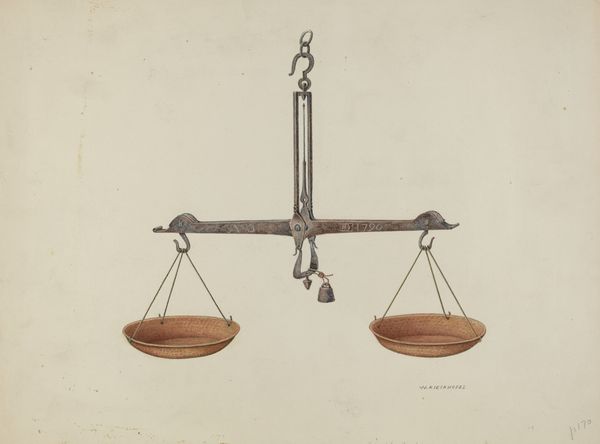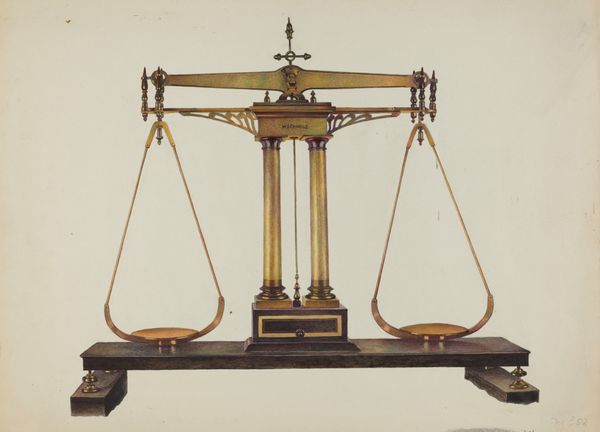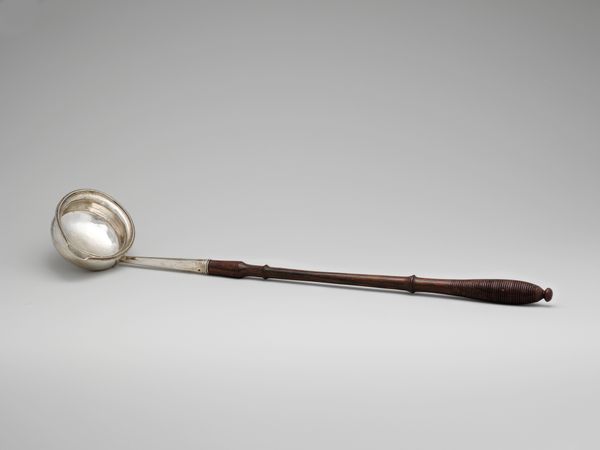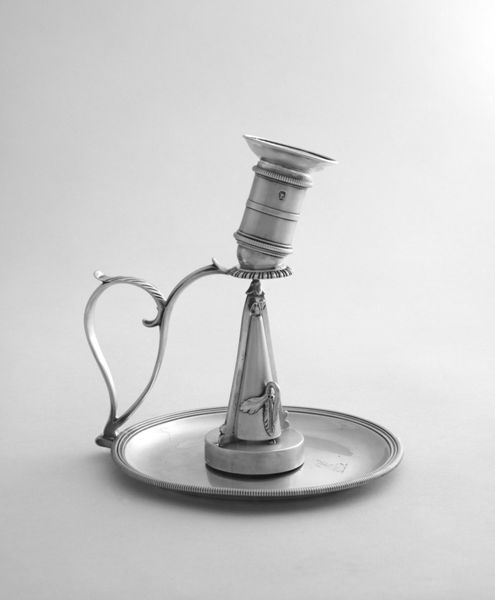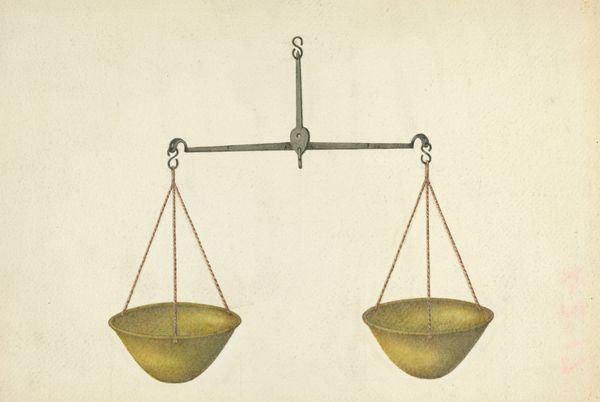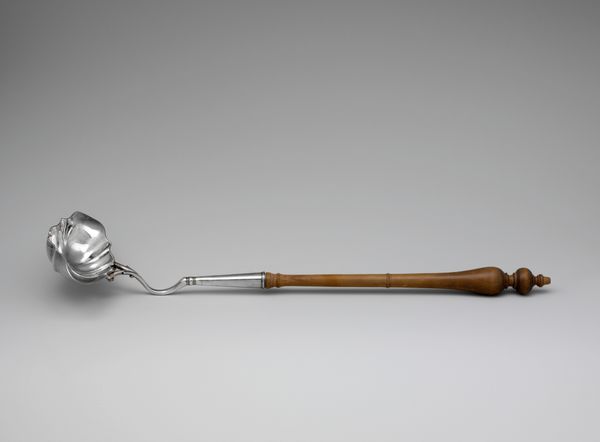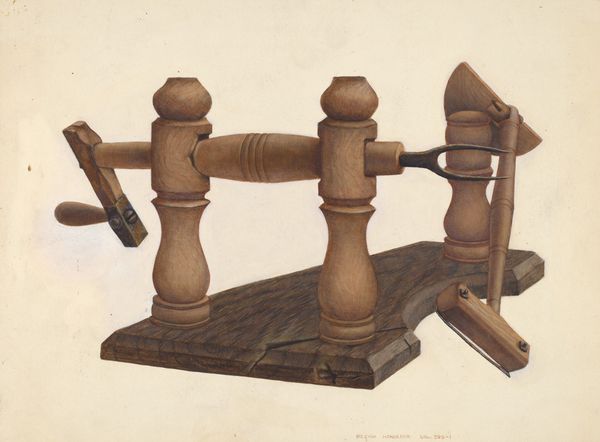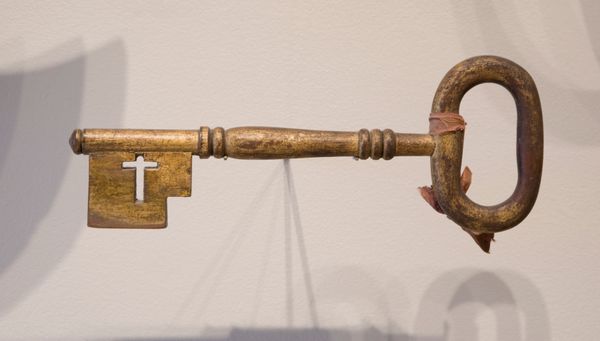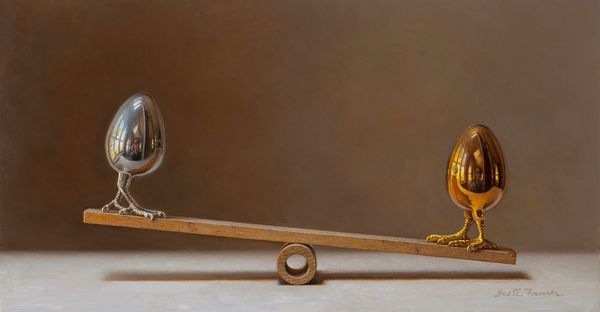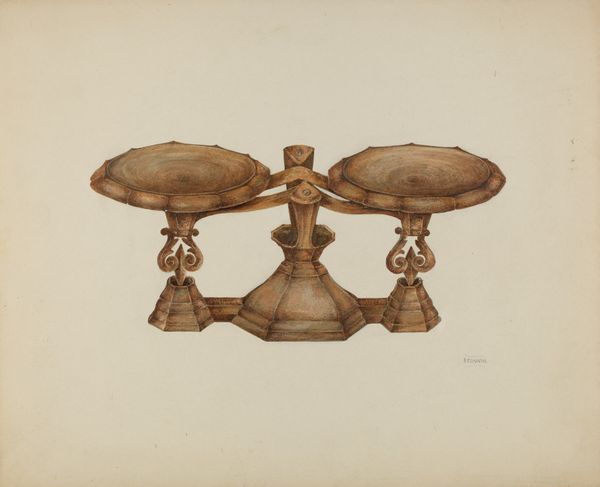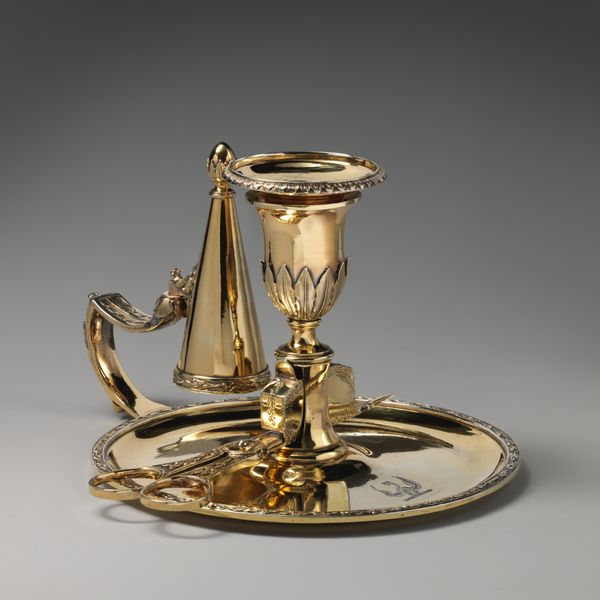
brass, metal, sculpture
#
brass
#
metal
#
geometric
#
sculpture
#
united-states
#
academic-art
#
decorative-art
Dimensions: 31 3/4 × 36 × 10 in. (80.6 × 91.4 × 25.4 cm)
Copyright: Public Domain
Editor: Here we have Henry N. Hooper and Company's "Balance Scale," crafted between 1840 and 1860 from brass and other metals. The elegant symmetry feels almost neoclassical. What layers do you see in this piece? Curator: This scale, beyond its apparent function and aesthetic appeal, becomes a potent symbol when viewed through a lens of social justice. How does it make you consider power? Think about who might have used such a precise instrument during that time, and for what purposes. Editor: I hadn't considered it in that way initially. I suppose I was focused on the beauty and form, but yes, weighing wasn’t just for ingredients – it was used in trade, potentially exploitation. How does the American context shape your view? Curator: Precisely. The mid-19th century was marked by profound inequalities, think slavery. Even in a seemingly neutral object like this scale, one can trace the legacy of those power imbalances. It's not merely a tool, but a reflection of its societal context. Do you see how geometric abstraction of shapes interacts with utility? Editor: I do, the shapes, the materials… even something meant to be purely objective reflects those societal dynamics. What did Hooper and Company intend by creating such a piece? Curator: Well, their intentions are less relevant than the cultural reality they inhabited. This scale represents their interpretation and the potential usage. It's a conversation between intent and impact. This becomes particularly salient given the ongoing dialogues about representation, fairness, and historical accountability. Editor: So, seeing art as an active participant in societal dialogues gives it a new voice. Thank you. Curator: Indeed. It prompts us to critically examine our present through the looking glass of the past. A simple scale holds much more weight than initially perceived.
Comments
No comments
Be the first to comment and join the conversation on the ultimate creative platform.
